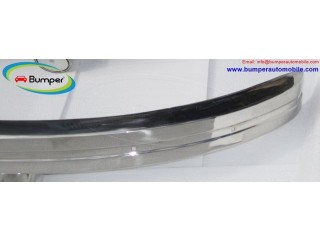Door Shells vs. Door Skins
3 years ago Automobiles Baltimore 1.1K views Reference: 43499Location: Baltimore
Price: Contact us
Door Shells vs. Door Skins
Do I need a door skin or do I need a door shell? That's one of the most common questions asked when it comes to repairing dented or rusted doors. In this article, we'll clarify exactly what door skins and door shells are, and we'll give you a general idea of what bodywork is required with each in order to help you make a more informed purchase.
All car doors consist of a frame to which trim and window components are mounted, and an outer metal layer that's attached to the outside of the frame. A "door skin" is the outer metal layer only. A "door shell" includes both the outer skin and the door frame, and is shipped preassembled with the skin already welded and bonded to the door frame. Door frames will also include the metal window surround, unless the vehicle uses "frameless windows".
The big decision whether to purchase the less expensive door skin or the more complete door shell rests on the answers to two questions: one, what is the extent of damage on my vehicle? And two, what is the availability for my particular year, make, and model ride? Let's take each of these in turn.
Door Skins
A door skin must be lightly hammered onto the door shell, crimped around the edges of the frame until the metal is flat, then secured in place permanently using either adhesives, welding, or brazing. "Brazing" is a metal-joining process where a filler metal is heated to its melting point, then distributed between two or more close-fitting parts to create a seal.
When a door shell is manufactured on an automaker's assembly line or an aftermarket supplier's factory, the joining process is typically performed by robots that spot weld with pinpoint accuracy, and it's difficult to match those levels of perfection by hand.
Body shop professionals are experienced when it comes to replacing door skins, but many in the business believe that an imperfect seal here will allow moisture, water, and contaminants to enter the door and cause corrosion. Until recently, replacing a sheet metal door skin required plug welding it to the door frame in dozens of spots. Advances in modern adhesives created for this purpose now allow door skins to be literally glued on, and body shops are increasingly using this process themselves.
Manufacturers of sheet metal adhesive have performed tests where two panels were glued together, then pulled apart. When sufficient pressure was applied, the metal tore before the glue failed. Because these bonding adhesives are available to the public, assembling your own door shell is easier than ever to do at home. Sheet metal adhesive is not a replacement for welding on all areas of the vehicle, but for door skins it can be perfectly satisfactory.
Simply put, damage which is confined to the skin may allow you to get away with replacing just the skin. Is it collision damage or rust-out which is being fixed? Collision damage oftentimes extends into the door frame itself, so be careful about hidden damage! You may think the dent is only in the skin. But it's during the disassembly that you discover how deeply the damage extends. Corrosion, on the other hand, will sometimes be confined to only the skin.
Door skins are a great value if you feel up to the task of doing this type of work yourself, because you'll avoid any labor charges, which can quickly add up. If you won't be doing the work of joining the skin to the door frame, it's essential to find a trustworthy body shop that can. Be sure what you save buying just a door skin isn't lost in labor. Remember the old skin has to be removed, the rest of the door made useable, and the new skin installed.
Door Shells





